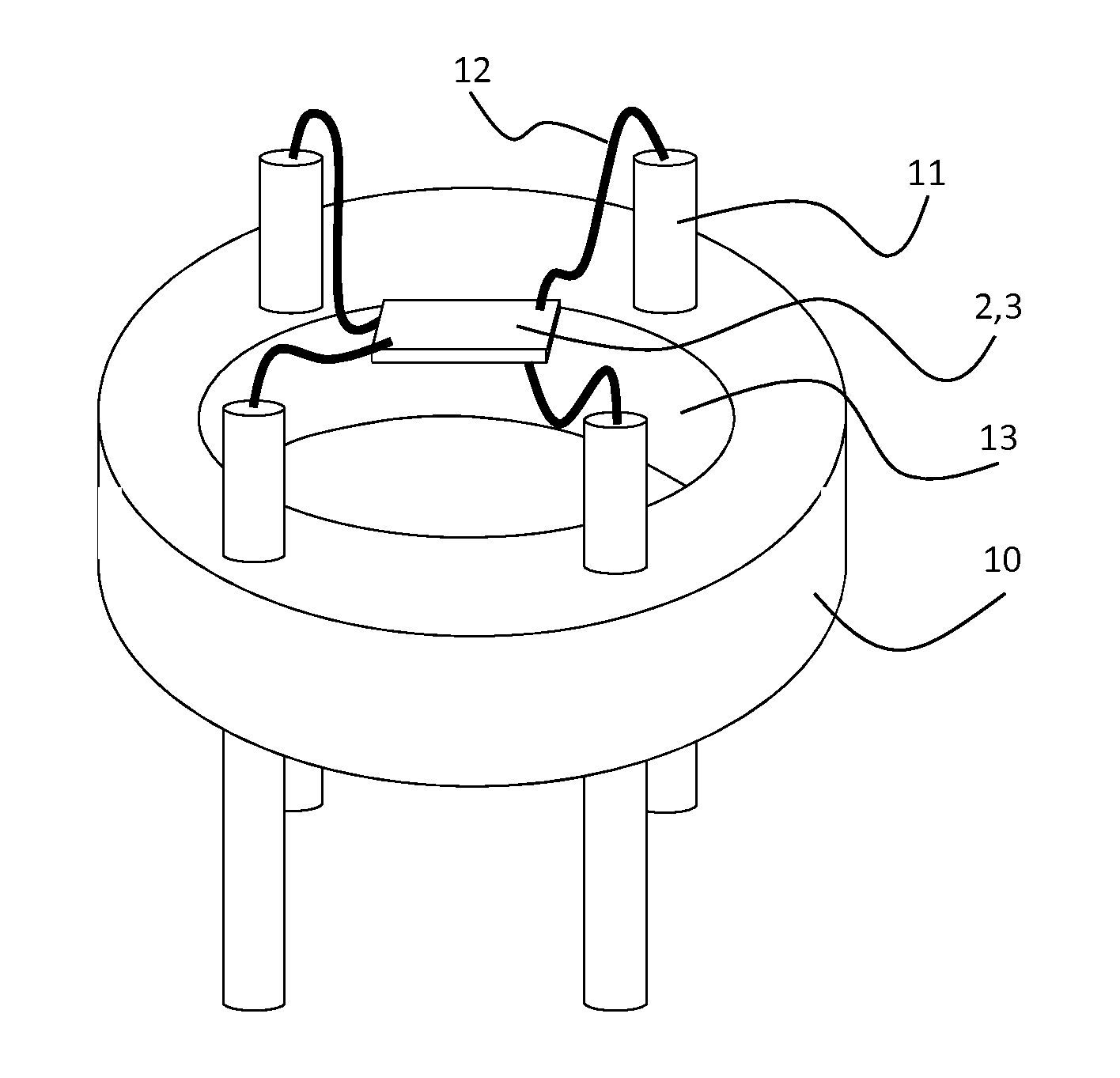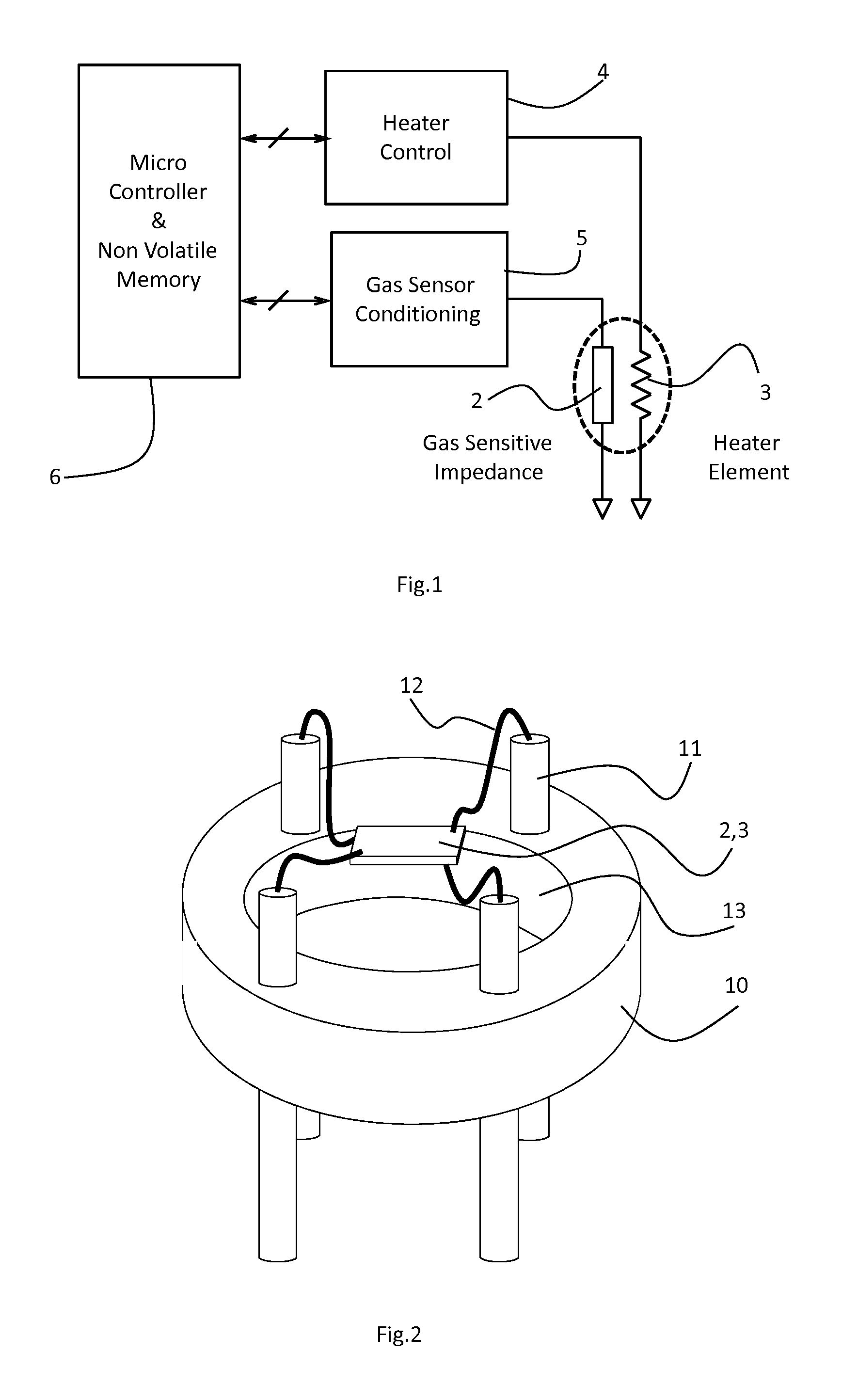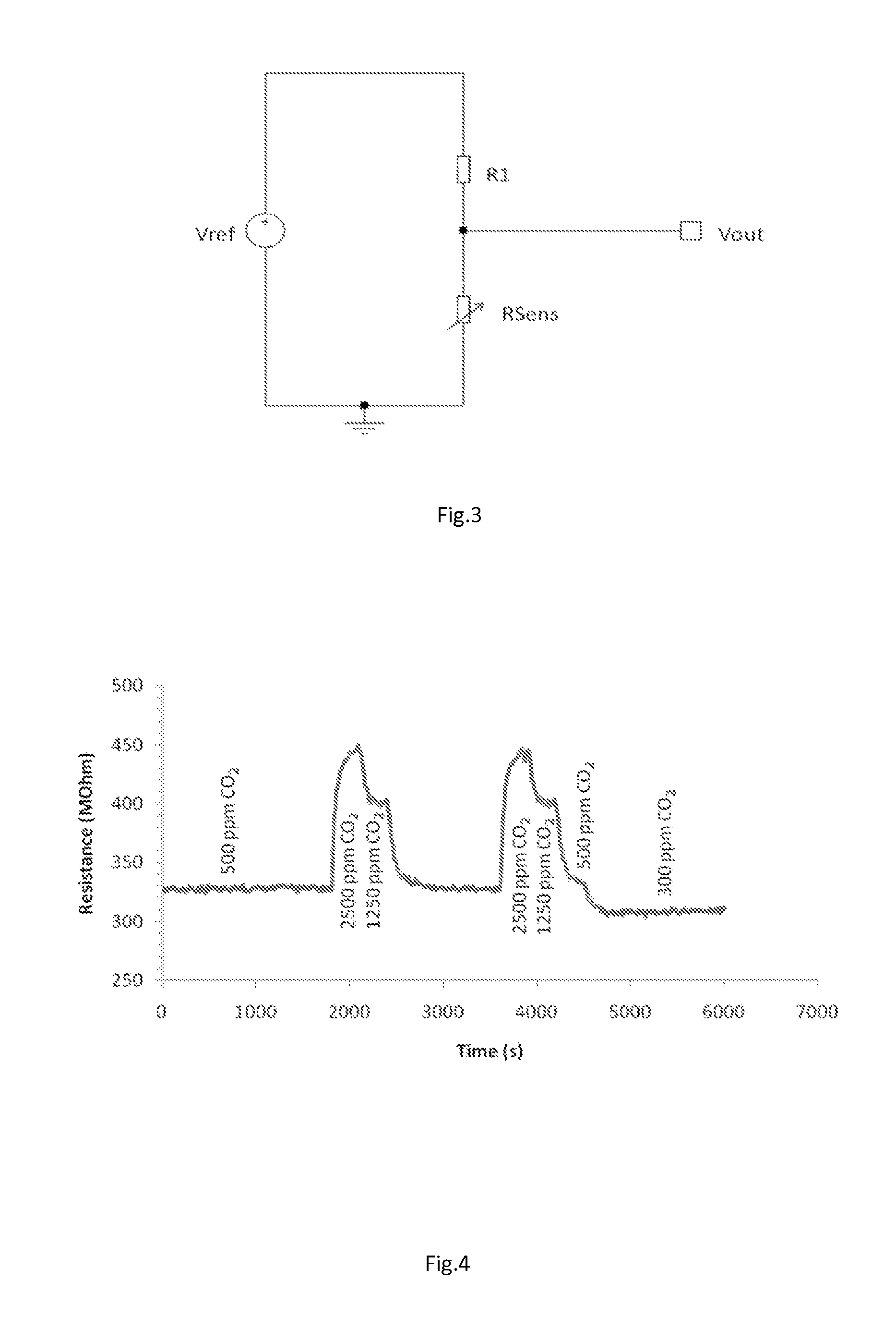Co2 sensing materials and sensors incorporating said materials
a technology of sensing materials and sensors, applied in the field of co2 sensing, can solve the problems of large operating power consumption, difficult operation, difficult to achieve, etc., and achieve the effect of increasing stability and additional protection
- Summary
- Abstract
- Description
- Claims
- Application Information
AI Technical Summary
Benefits of technology
Problems solved by technology
Method used
Image
Examples
example 1
[0050]The gas-sensitive material was prepared by dry mixing commercial grade Barium Citrate powder (Aldrich, 325 mesh) with WO3 powder (New Metals, Ceramic Grade) in the ratio 66 mol %:33 mol % on a roller mill The powdered mixture was then heated to 750° C. for 1 hour, which resulted in a gas-sensitive material including the following crystalline phases as determined by X-ray diffraction: BaWO4 and WO3. The material was then converted into a screen-printable ink by mixing it with a commercial ink vehicle, ESL 400, in a ball mill, such that the solids loading was 85 wt %. The gas sensor was then fabricated using a 250 μm thick 2 m×2 m aluminium oxide chip with on one side a serpentine platinum heater track and on the other side an interdgitated gold electrode pattern (65 μm electrode digit spacing), upon which a 150 μm thick layer was screen-printed using a 1202 DEK printer. The sensor chip was mounted onto a 4-pinned base by means of welding platinum wires between the chip bond pad...
example 2
[0064]The gas-sensitive material was prepared by a wet chemistry route. A barium nitrate solution was prepared by dissolving 7.5 of BaNO3 in 100 ml of water. To this was added, 300 ml of methylene chloride while continuously stirring. To the resulting emulsion, a solution of tungsten tetrachloride (7.31 g dissolved in 150 ml of 6 molar potassium hydroxide solution) was added with constant stiffing and a gel was formed. The gel was thoroughly washed with water until no more white silver chloride was formed by the addition of AgNO3. The gel was dried at 50° C. overnight and subsequently fired at 800° C. for 4 hours. The calcined material was sieved through a 38 μm mesh and dispersed in an ESL 400 ink vehicle with a 80% solids loading to make a screen-printable ink. A sensor was fabricated along the same lines as in Example 1, and tested in CO2 gas using the following test program:[0065](i) 60 seconds in static air[0066](ii) 300 seconds in flowing 500 ppm CO2-balance air[0067](iii) 300...
example 3
[0072]A sensor chip as prepared as in Example 1 but in this case, two meter long Pt wires were connected to the sensor electrodes and the chip was placed on an aluminium oxide tile which itself was positioned on a sectioned ceramic furnace tube, as shown in FIG. 7. This sectioned tube was then placed in an outer tube in a furnace which allowed controlled atmospheres. The mounted sensor chip was ‘passively’ heated by the furnace atmosphere to 650° C. in an atmosphere comprising a background composition of (in volume %) N2, 10% O2, 3% H2O and 0.25% CO2. As shown in FIG. 8, the CO2 level was systematically increased in increments of 0.25% up to a maximum value of 4 vol % during the course of the test. Unlike in Example 1, the sensor was not conditioned by a firing to a higher temperature. It can be seen in FIG. 8 that the sensor responds to changes in CO2 in the range 1 to 3 vol % with a decrease in resistance. Below 1 vol %, the sensor may be equilibrating with its surroundings or is ...
PUM
 Login to View More
Login to View More Abstract
Description
Claims
Application Information
 Login to View More
Login to View More - R&D
- Intellectual Property
- Life Sciences
- Materials
- Tech Scout
- Unparalleled Data Quality
- Higher Quality Content
- 60% Fewer Hallucinations
Browse by: Latest US Patents, China's latest patents, Technical Efficacy Thesaurus, Application Domain, Technology Topic, Popular Technical Reports.
© 2025 PatSnap. All rights reserved.Legal|Privacy policy|Modern Slavery Act Transparency Statement|Sitemap|About US| Contact US: help@patsnap.com



